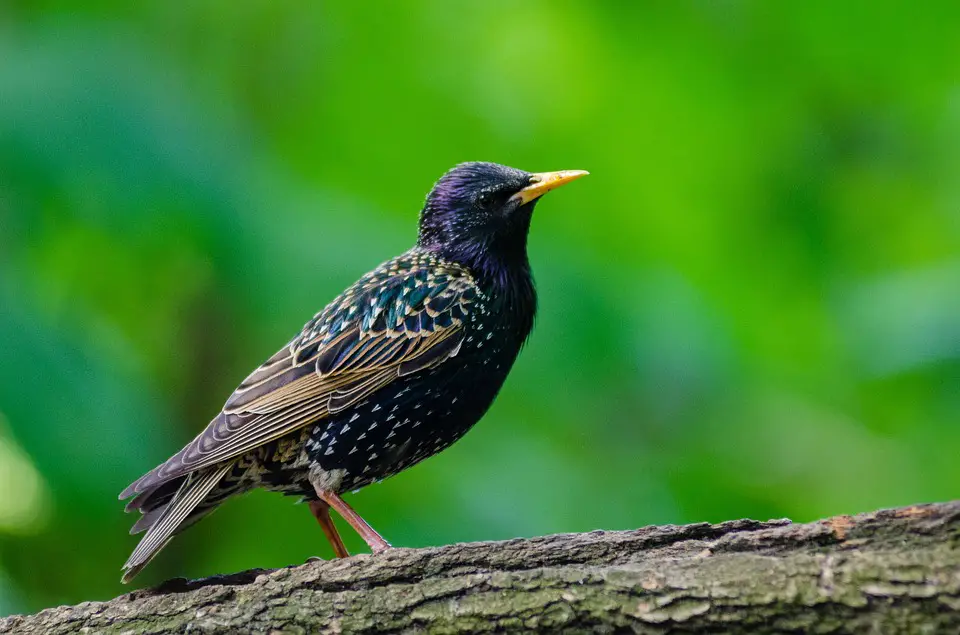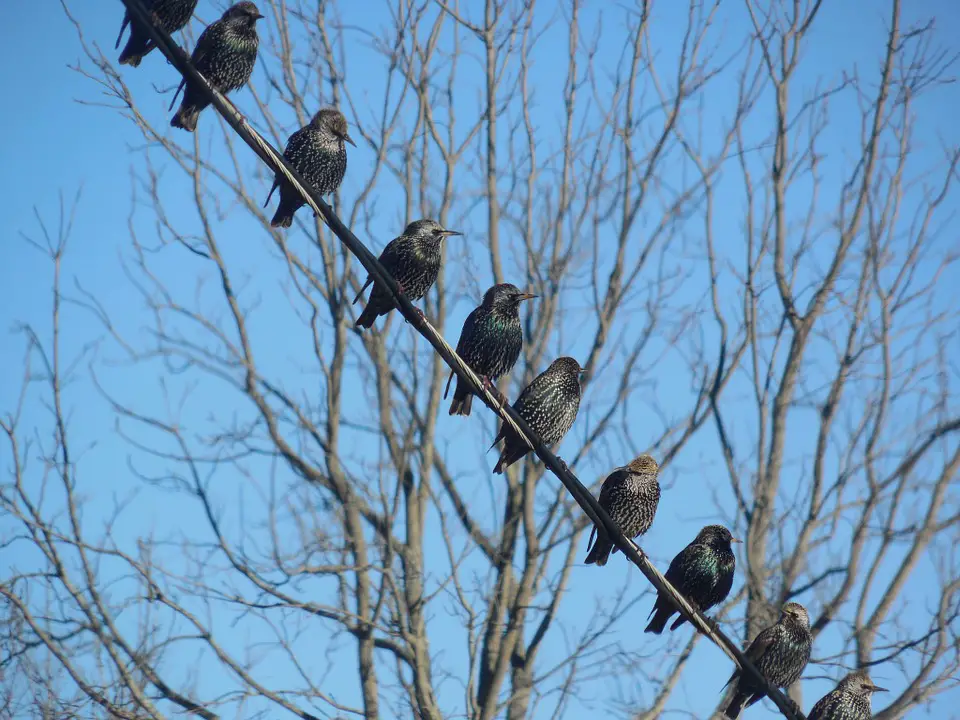The common starling, Sturnus Vulgaris, is one of the most predominant garden birds in the U.K. Easily recognisable by his white spotted breast and glossy plumage, not black as some would think but metallic purpley green. It’s not so simple to pick him out with your eyes closed though, the clever bird has his own song yet has the ability to mimic the calls of other birds around him.
As the species is so prevalent I imagined that there must be a constant source of food with high nutritional value readily available for them and decided to explore further.
The starling is omnivorous, this means he will eat any type of many different foods, including both plants and animals.
They are greatly dependent on invertebrates, particularly once their young are born, as insects are their sole source of nourishment. Spiders, worms and caterpillars are just a few of the valuable insects in their diet.
Grain and seed feature very heavily in an adult starling’s diet, which is why they often make their habitats near to open farmland.
Ripe fruits, plants and the contents of our bird feeders make up the remainder of their diet.

Table of Contents
Weaning
Starlings live in huge colonies, often thousands of birds all in one community. As such, they all nest closely, breed simultaneously and hatch their broods within a day or two of each other.
This means there has to be a huge source of food available nearby so open farmland is often their best option when searching for a nesting spot.
The breeding season coincides with the ploughing of the fields in preparation to plant. All of that freshly turned soil is bursting with the invertebrates that the adult birds feed their nestlings for three weeks until they become fledglings. These are necessities for successful breeding as these insects are the only things that a parent bird will feed their babies.
Imagine my surprise when I saw that they like a leather jacket. No, they are not auditioning for Grease, it is the colloquial name for the larvae of the crane fly! They are most commonly found on short grasslands and lawns.
Even when the fledglings leave the nest the parent will continue to feed them for a further week or two until they find their wings.
The nestling’s stomachs are not capable of coping with fluids so all of their nourishment comes from invertebrates.
The Adult Menu
During summer and autumn his diet will become more seed and berry orientated, the starling’s intestine will lengthen to help him cope with the increased amount of plant material he will eat as it will be harder to digest.
Everything about a starling’s design is conducive to foraging and finding food, whether for himself or to feed his young.
Their long and pointed bills make light of digging through soil for insects and grains, through leaves and plants for fruit and berries and in bird feeders for seeds and other delights.
They prefer to live at height, away from the intimidation of most predators, therefore trees provide not only an ideal place to nest but a fantastic source of food too. The very ripe fruit is a particular delicacy but caterpillars and other invertebrates that crawl amongst the branches are easy pickings too.

The Garden Starling
The starling should by no means be under-estimated as they are devilishly clever and incredibly opportunistic, they can scavenge food from anywhere. They like to congregate at bird tables and empty feeders before the tits and finches have had any opportunity, or beneath them for anything that may have been scattered on the ground.
They are not fond of whole sunflower seeds, peanuts or corn kernels, but any of them chopped or crushed will be devoured.
Fat balls, suet in blocks or pellets are a firm favourite too and offer a good source of protein and calories to provide him with much needed warmth and energy.
Their feet are strong and powerful which enables them to walk on hard ground if there is an opportunity to steal a crumb.
Not the vegan menu!
Adults have particular favourites from the insect world too, centipedes, moths and earthworms. They are even partial to a spider now and then.
Overall it seems that the starling is a clever bird that has learned to use his surroundings to maximum effect to not only sustain himself and his mate, but the one or two clutches that they may have each year too. And not a takeaway in sight!

This was a great website, informative and funny! keep it up. I have lots of different birds in by garden and love sitting watching and listening. Not a fan of Magpies I must admit, the pirates of the bird world……
Hi there . Brilliant piece . I observed a very unusual behaviour this afternoon though . I find that my particular group of starlings that frequent my table like mealworms and lap them up quick as you like . I dont mind this as find their presence enjoyable . This afternoon though while watching the birds feed i noted that two birds were perched either side of the food bowl looking out in opposite directions . No calling . very still apart from the witch of the head as if looking out for something . Occasionally they would have a quick munch before returning to look out . This went on for about ten minutes with no other birds returning . Then as soon as they left other bords arrived ! Have you ever noticed anything like this ? All very bazaar